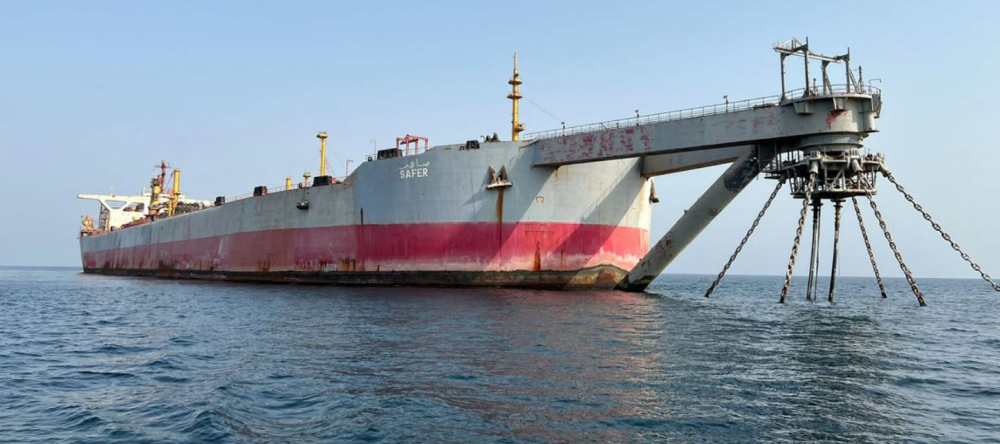The UN’s milestone operation to salvage Yemen’s stricken oil tanker: Key questions answered


The task of transferring a million barrels of oil from the stricken supertanker Yemen, will take some 19 days – preventing what would be the fifth largest spill in history, were the rusting tanker to break apart.
But this process will not end with the oil transfer, because the FSO Safer will continue to pose an environmental threat, the UN is warning. And an additional $22 million in funding is still needed to finish the job.
How did the tanker end up off the Yemen coast?
The Safer was built as a supertanker in 1976, and converted a decade later into what is in effect, a floating oil container.
This ship is anchored around 4.8 nautical miles off the coast of Al Hudaydah Governorate in Yemen and contains an estimated 1.14 million barrels of light crude.
The production, offloading and maintenance operations of the tanker were suspended in 2015 due to the conflict between Houthi rebels and a pro-Government coalition in Yemen, and the structural integrity of the tanker deteriorated significantly, putting it it at risk of collapse.
The systems needed to pump inert gas into the tanker stopped working in 2017, resulting in a real risk of explosion, and the tanker was deemed to be beyond repair.
War-torn Yemen has no capacity or ability to deal with the impact of a massive oil spill, endangering the entire marine ecosystem and economy of the Red Sea – an area that is home to key shipping lanes.
What are the implications of a massive oil spill?
The cost of emptying the Safer and salvaging it, is estimated at $20 million. But if it were to break apart with the oil onboard, the disaster could cost around $20 billion to clean up.
And if any massive oil spill occurred, it would devastate fishing communities on Yemen's Red Sea coast, as millions depend on fishing in the area. An oil spill could immediately wipe out 200,000 livelihoods. Entire communities will be exposed to life-threatening toxins, the UN warns.
This major oil spill could shut down the nearby ports of Hudaydah and Saleef; two key outlets for food, fuel and life-saving supplies in a country where 17 million people need food assistance.
The environmental impact on the waters, coral reefs, mangroves and diverse marine life would be severe. The spilled oil could reach the shores of Saudi Arabia, Eritrea, Djibouti and Somalia. Desalination plants on the Red Sea coast could also be shut down, cutting off fresh water sources for millions of people.
Any possible leakage would pollute the air on a large scale. It is also possible that the vital navigation traffic through the Bab al-Mandab Strait to the Suez Canal could be disrupted for a long time, which will cause billions of dollars in losses per day. Tourism would also suffer.

Al-Jawf -- A landmine explosion in Yemen’s Al-Jawf province claimed the life of a woman and left another civilian with severe injuries, in wh…

Aden -- Russia has called on all parties involved in the Yemeni conflict to seek consensus-driven solutions that safeguard the country’s unit…

Socotra — Local residents and maritime sources said the closure of Socotra International Airport has left the Yemeni island almost completely…